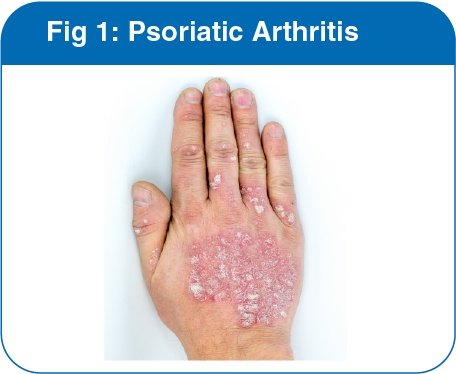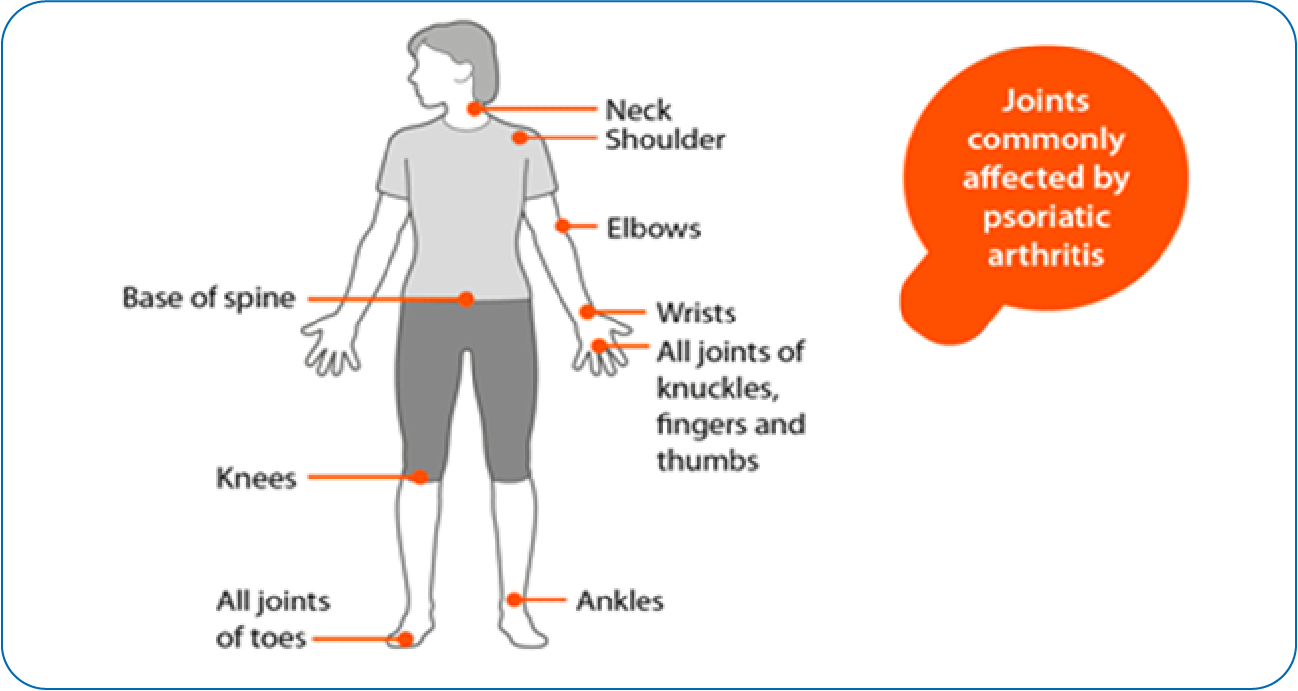Psoriatic Arthritis

What is Psoriatic Arthritis?
Psoriasis is a multisystemic skin condition that affects many areas of the body.
1- Psoriatic arthritis (PsA) is a joint disease that occurs as a complication of psoriasis with a strong genetic component. (Figure 1). In about 47% of patients, the disease becomes destructive, leading to bone erosion and loss of joint structure. The disease can be very challenging when symptoms such as pain, and fatigue are present.
What are the Commonly affected joints?
The joints commonly affected are the wrists, fingers, ankles, toes, neck, shoulder, elbows, knees, back etc.

What are the levels of severity of PsA?

PsA-Psoriatic Arthritis.
Diagnosis of PsA:
• Laboratory tests:
Erythrocyte Sedimentation Rate (ESR) – A higher ESR could indicate PsA along with markers of the disease.2
Rheumatoid factor (RF) and Anticyclic citrullinated peptide antibodies (ACPA) – These antibodies are found in most patients with PsA. Human leukocyte antigen B27 (HLA- B27) – This is a genetic marker that is present in the blood of PsA patients. Apart from these, mild anemia may be existent.
• Radiography:
The X-ray shows bone and joint damage specific to PsA.3
• Bone density scan:
PsA may contribute to loss of bone substance and it is important to keep a track of bone strength.3
Reference:
- Zlatkovic-Svenda M, Kerimovic-Morina D, Stojanovic RM: Psoriatic arthritis classification criteria: Moll and Wright, ESSG and CASPAR — a comparative study. Acta Reumatol Port. 2013;38(3):172–8
- Gladman DD, Shuckett R, Russell ML, Thorne JC, Schachter RK. Psoriatic arthritis (PSA)-an analysis of 220 patients. QJM: An International Journal of Medicine. 1987 Feb 1;62(2):127-41.
- Wright V. Psoriatic arthritis: a comparative radiographic study of rheumatoid arthritis and arthritis associated with psoriasis. Annals of the Rheumatic Diseases. 1961 Jun;20(2):123.